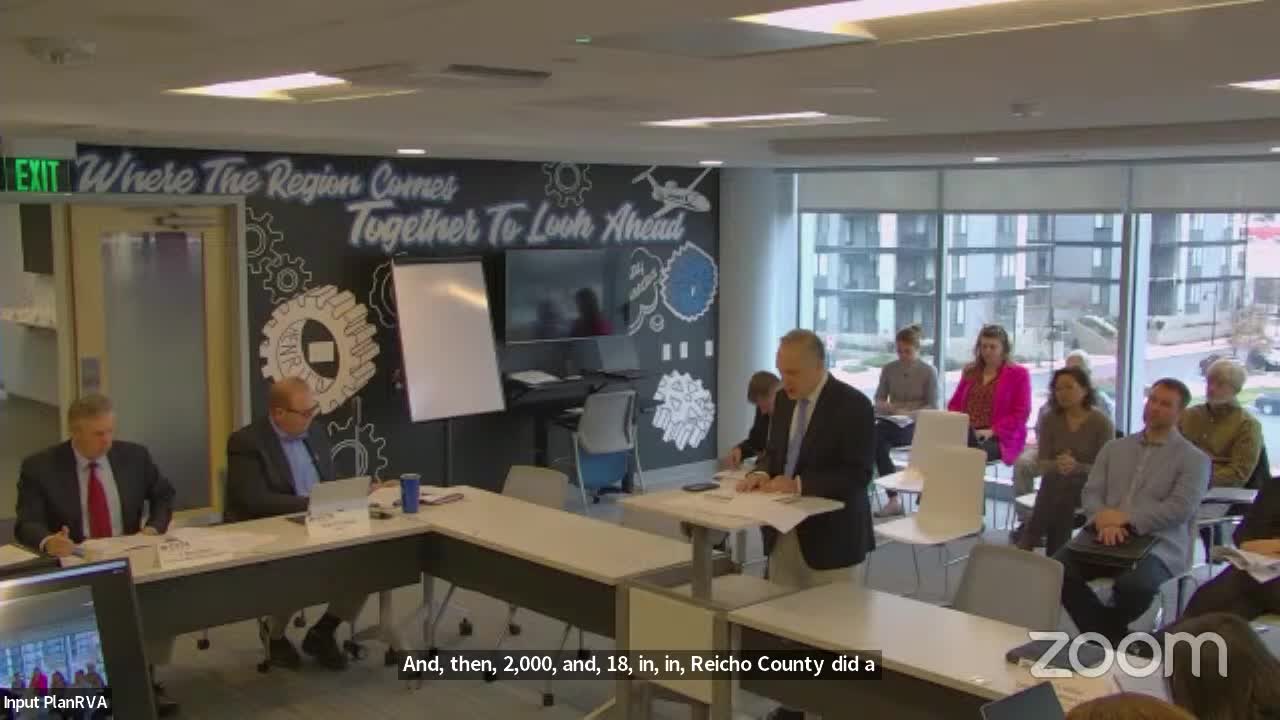Henrico community advocates for preservation of Route 5 historic corridor
February 24, 2024 | Central Virginia Transportation Authority, Boards and Commissions, Executive, Virginia

This article was created by AI summarizing key points discussed. AI makes mistakes, so for full details and context, please refer to the video of the full meeting. Please report any errors so we can fix them. Report an error »

The Central Virginia Transportation Authority (CVTA) meeting on February 23, 2024, highlighted significant community concerns regarding the preservation of the Route 5 Corridor, a vital historical and economic asset in the region. Community members voiced strong support for maintaining the rural character and historical integrity of the area, emphasizing the corridor's rich heritage, which includes connections to notable figures and events in American history.
During the meeting, it was noted that a 2018 study did not recommend expanding Route 5 or New Osborne Turnpike, underscoring the ongoing comprehensive planning process in Henrico County that aims to address land use, transportation, and historical issues. The Route 5 Corridor is recognized as the second oldest roadway in the nation and a designated scenic byway, making its conservation crucial for both economic and cultural well-being.
Concerns were raised about the potential increase in traffic and development that could follow any expansion of the roadway. The proposed four-lane highway could exacerbate existing issues, particularly for historically marginalized communities that have already faced significant disruption due to urban development. The meeting participants highlighted the need for alternative solutions, such as maintaining the road as two lanes and exploring mixed-use developments in underutilized areas.
The CVTA's discussions reflect a broader commitment to balancing transportation needs with the preservation of historical and cultural assets. As the planning process continues, stakeholders are urged to consider the long-term implications of their decisions on both the community and the environment. The meeting concluded with a call for innovative land use strategies that prioritize the area's historical significance while accommodating necessary infrastructure improvements.
During the meeting, it was noted that a 2018 study did not recommend expanding Route 5 or New Osborne Turnpike, underscoring the ongoing comprehensive planning process in Henrico County that aims to address land use, transportation, and historical issues. The Route 5 Corridor is recognized as the second oldest roadway in the nation and a designated scenic byway, making its conservation crucial for both economic and cultural well-being.
Concerns were raised about the potential increase in traffic and development that could follow any expansion of the roadway. The proposed four-lane highway could exacerbate existing issues, particularly for historically marginalized communities that have already faced significant disruption due to urban development. The meeting participants highlighted the need for alternative solutions, such as maintaining the road as two lanes and exploring mixed-use developments in underutilized areas.
The CVTA's discussions reflect a broader commitment to balancing transportation needs with the preservation of historical and cultural assets. As the planning process continues, stakeholders are urged to consider the long-term implications of their decisions on both the community and the environment. The meeting concluded with a call for innovative land use strategies that prioritize the area's historical significance while accommodating necessary infrastructure improvements.
View full meeting
This article is based on a recent meeting—watch the full video and explore the complete transcript for deeper insights into the discussion.
View full meeting
